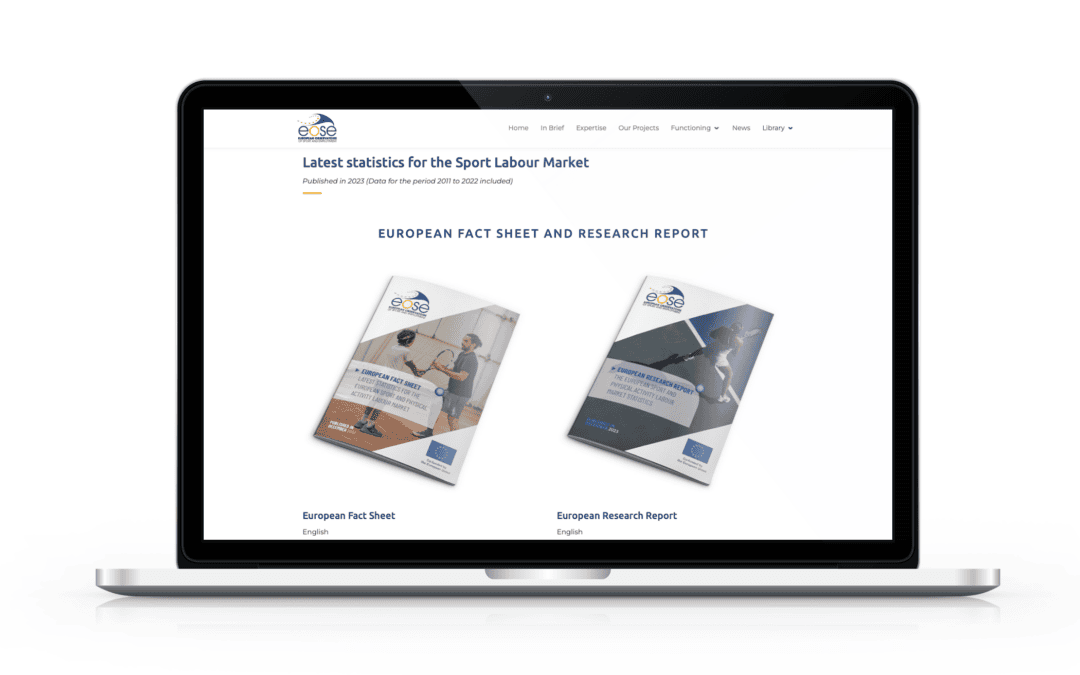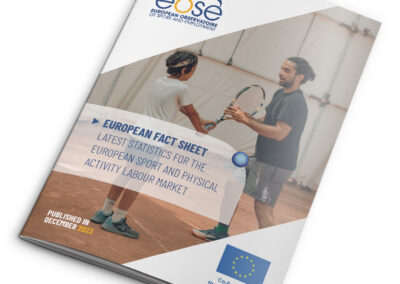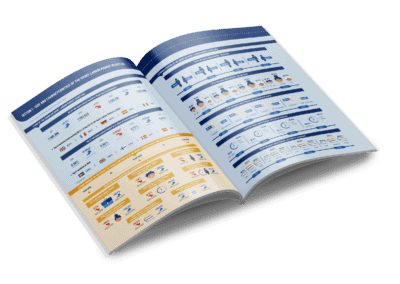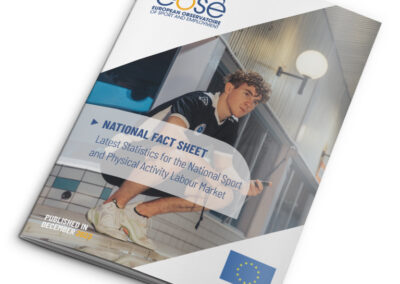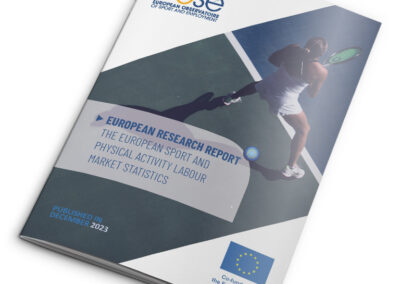Each year EOSE collates, analyses and publishes the latest paid employment data for the European sport sector (EU-27 and the UK), sourced from Eurostat and national statistical authorities. We strongly believe that these annual statistics are of great value to EOSE members, their networks and the wider European sport community in helping them to formulate strategies and initiatives in response to the realities, trends and challenges of sport employment at European and national levels.
EOSE is delighted to announce that the latest European statistical report together with short factsheets illustrated by infographics for each EU country + UK is now available on our website.
The European report and the factsheets look at the overall characteristics and trends in paid sport employment for the period 2011-2022. They are particularly interesting since they cover the period up to Covid-19, the pandemic period itself and the first years of post-pandemic recovery.
Within the European report and factsheet, readers will find:
- A detailed analysis of the whole paid sport labour market for the period 2011-2022 revealing long-term trends.
- A special focus on the years 2019-2022 showing the impact of Covid and indicators of post-Covid recovery.
- A detailed analysis of workers employed in sport and fitness occupations (athletes, coaches, instructors, trainers etc.).
- A detailed analysis of workers employed specifically in sport organisations.
Each of these sections includes a detailed breakdown of the workforce by gender, age, level of qualification, fulltime/part-time contracts and the self-employed.
The six-page national factsheets present similar findings for each EU country and the UK using clear and easy-to-understand infographics.
SOME KEY SPORT EMPLOYMENT FINDINGS AND TRENDS AT THE EUROPEAN LEVEL
Here are a few findings which we think will interest you and stimulate you to look more closely at the European report and relevant factsheets.
The paid sport labour market in 2022

- By the end of 2022, the European sport sector employed 1 935 969 paid workers. This is an increase of 30.8% since 2011.
- 5% of this total workforce were employed in organisations whose main business is sport.
- However, a narrow majority (50.5%) of sport and fitness workers (athletes, coaches, instructors, officials, personal trainers etc.) was employed in organisations whose main business was not sport. This has declined from 54.2% in 2011.
- The largest sport labour forces were found in the UK (22.3% of total European sport employment), France (16.1%), Germany (12.3%) and Spain (12.0%).
- The four countries whose sport labour forces had the highest share of their total labour force (all sectors) were Sweden (1.45%), UK (1.3%), Finland (1.27%) and Denmark (1.21%).
- In 2022 the paid sport workforce was predominantly male. There has been a tendency for the female workforce to decline (47.9% in 2011, 45.7% in 2022). Compared to the EU average (all economic sectors), the representation of females in the sport workforce is lower by 1.0 percentage point.
- When we consider only sport and fitness workers (athletes, coaches, instructors, officials, personal trainers etc.), the representation of females was even lower (44.6%).
- The total sport labour force tends to be younger than average. 24.2% were aged 15-24 years compared to only 8.6% in all European industrial sectors.
- When we consider only sport and fitness workers, the proportion in the 15-24 age group was even higher (27.3%).
- Part-time contracts in sport are much more common than in other sectors. 41.4% of paid sport employees were on part-time contracts which compares with a European average (all sectors) of 18.7%.
- Sport and fitness workers were even more likely to be employed part-time (46.8%).
- Self-employment is also more common in sport. 21.9% of the workforce were self-employed compared to the European average (all sectors) of 13.1%. There was a growth of 4 percentage points since 2011.
- Self-employment was even more common for sport and fitness workers (31.3%).
2019-2020 – The impact of the Covid pandemic
- There was a decline in 2019-2020 of 3.7 percentage points in the overall paid sport labour force – the first time we have seen a significant downward trend since 2011. This compares with a 1.4-percentage point decline for EU paid employment overall (all industrial sectors), suggesting that sport was more affected than others.
- Groups particularly affected in 2019-2020 included youth (-7.9%), females (-5.7%), part-timers (-6.2%).
- The same years showed an increase in self-employment by 6.7%.
2020-2022 – Signs of post-Covid recovery
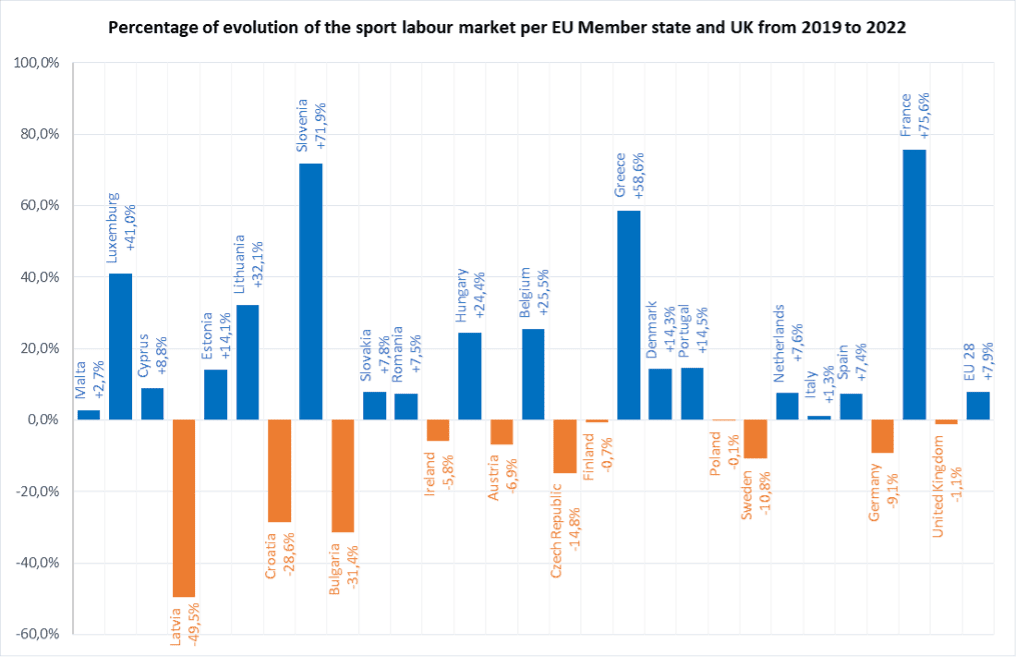
- 2020-2022 showed an overall increase of 12.1% in paid sport employment compared to 2019-2020. However, we should emphasise that there were definitional changes for the statistics in France and Spain which make it difficult to make comparisons with previous years.
- Although 17 of the 28 countries we analysed showed signs of recovery in 2022, 11 countries employed fewer sport employees in 2022 than they did in 2019.
- France showed the greatest growth at +75.6% (although this may be affected by a definitional change mentioned above), Slovenia (+71.9%), Greece (+58.6%) and Luxembourg (+41%).
- Countries which in 2022 had not yet recovered to 2019 levels included Latvia (-49.5%), Bulgaria (-31.4%), Croatia (-28.6%) and the Czech Republic (-14.8%).
- Two of the largest sport labour forces were also still in negative growth in 2022: Germany (-9.1%) and UK (-1.1%).
- At the European level, 2020-2022 saw recovery in those groups which had been most impacted during the Covid period – females (+15.6%), youth (+16%) and part-timers (+10.1%).
- Older workers also increased during this period by 16%.
- 2020-2022 also showed a continuing growth of self-employment by +1.7%.
For much more data and detailed analysis, we strongly recommend that you download and study the European report and factsheet and the factsheet for your own country and other countries of interest.
